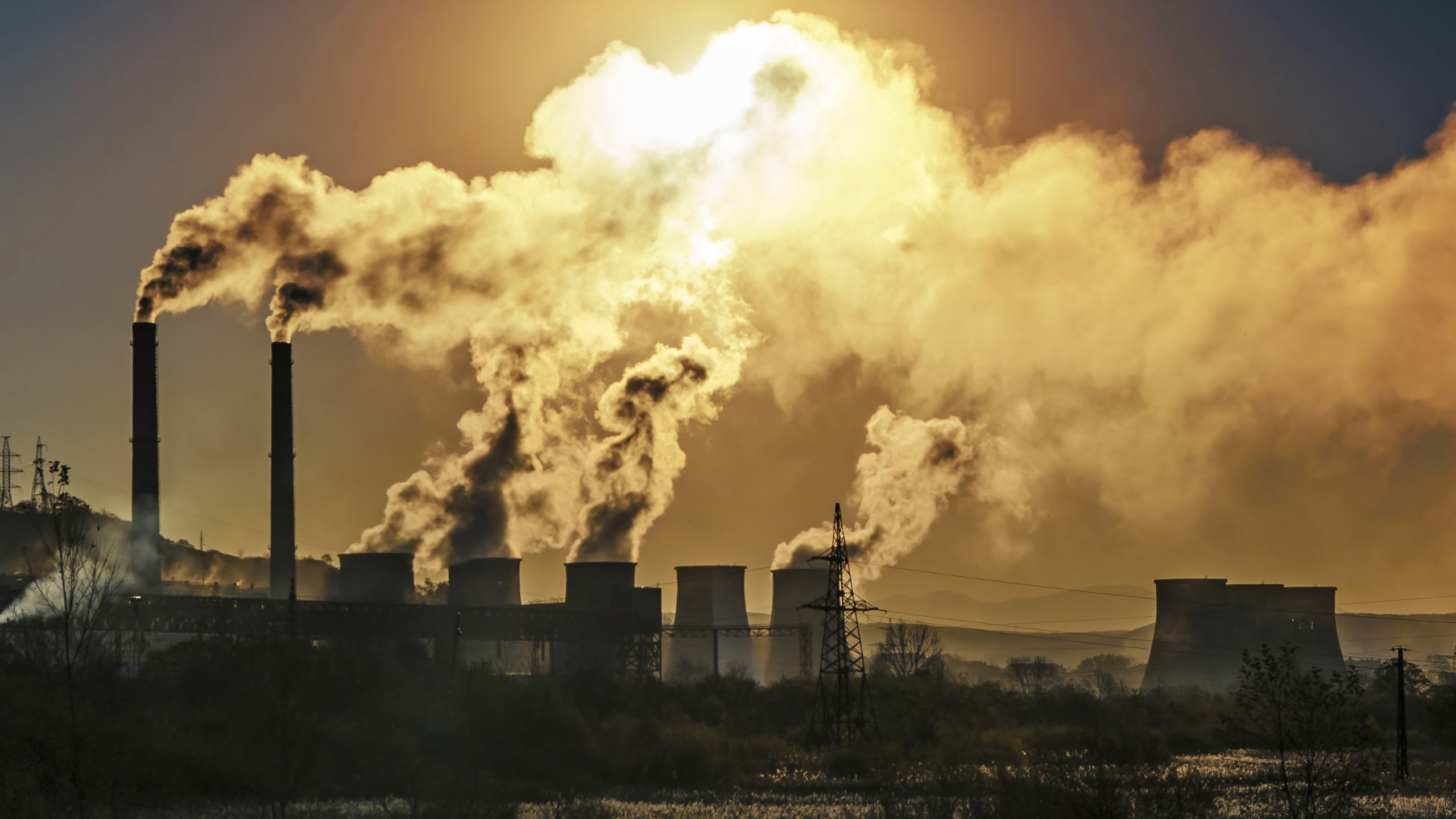Home>Gardening News and Trends>What Type Of Radiation Is Absorbed By Greenhouse Gases


Gardening News and Trends
What Type Of Radiation Is Absorbed By Greenhouse Gases
Modified: January 22, 2024
Discover the latest news on greenhouse gases and their absorption of radiation. Learn about the types of radiation involved in this crucial environmental phenomenon.
(Many of the links in this article redirect to a specific reviewed product. Your purchase of these products through affiliate links helps to generate commission for Chicagolandgardening.com, at no extra cost. Learn more)
Table of Contents
Introduction
Welcome to the fascinating world of greenhouse gases and their role in absorbing radiation. In this article, we will delve into the concept of radiation and its interaction with greenhouse gases, exploring the effects of this process on the Earth’s climate. Understanding how greenhouse gases absorb radiation is essential for comprehending the greenhouse effect and its implications for our planet.
Radiation is a powerful force that plays a significant role in the Earth’s energy balance. It comes from various sources, including the sun, the Earth’s atmosphere, and even human activities. When radiation interacts with greenhouse gases, it undergoes a process known as absorption, which can lead to a variety of outcomes.
The greenhouse effect, a result of the absorption of radiation by greenhouse gases, is a natural phenomenon that has shaped the Earth’s climate for millions of years. However, human activities have intensified this effect, causing concerns about global warming and climate change.
In this article, we will explore the different types of radiation and how they interact with greenhouse gases. We will examine the specific gases involved in the process of radiation absorption, their concentrations in the atmosphere, and the implications of their interaction. By gaining a deeper understanding of these concepts, we can appreciate the impact of greenhouse gases on our climate and make informed decisions to mitigate their effects.
So, join us on this journey as we unravel the mysteries of radiation absorption by greenhouse gases. Let’s dive into the intricacies of this phenomenon and explore its environmental significance, from the effects on temperature to the long-term impacts on the planet’s ecosystems. Through learning and awareness, we can contribute to a more sustainable and balanced future for generations to come.
Understanding Radiation
To comprehend the process of radiation absorption by greenhouse gases, it is crucial to have a clear understanding of radiation itself. Radiation can be defined as the emission and propagation of energy in the form of electromagnetic waves or particles. It exists in various forms, ranging from visible light and radio waves to X-rays and gamma rays.
Radiation can originate from both natural and human-made sources. The most significant natural source of radiation is the sun, which emits vast amounts of energy in the form of electromagnetic radiation. This radiant energy travels through space and reaches the Earth, providing heat and light that sustain life on our planet.
When radiation interacts with matter, it can be absorbed, reflected, or transmitted. The behavior of radiation depends on the properties of the material it encounters. Some materials have the ability to absorb specific types of radiation, capturing the energy and converting it into heat. Others may reflect or scatter the radiation, preventing it from being absorbed.
Understanding the different types of radiation is essential in comprehending their interactions with greenhouse gases. The electromagnetic spectrum encompasses a wide range of radiation, categorized based on their wavelengths and frequencies. The spectrum includes radio waves, microwaves, infrared radiation, visible light, ultraviolet radiation, X-rays, and gamma rays.
Each type of radiation carries a different amount of energy and interacts with matter in distinct ways. For example, visible light is capable of being absorbed by certain pigments, resulting in the perception of color, while X-rays can penetrate through soft tissues but get absorbed by denser materials like bones.
As sunlight reaches the Earth’s atmosphere, it contains a combination of different types of radiation. This energy interacts with greenhouse gases present in the atmosphere, initiating a complex process that leads to the absorption and re-emission of radiation.
With a basic understanding of radiation, we can now delve deeper into the greenhouse effect and explore how radiation absorption by greenhouse gases impacts our climate. By comprehending this phenomenon, we can take necessary measures to address the challenges posed by global warming and work towards a sustainable future.
The Greenhouse Effect
The greenhouse effect is a critical natural process that helps regulate the Earth’s temperature and maintain a habitable environment. It is the result of certain gases in the Earth’s atmosphere, known as greenhouse gases, absorbing and re-emitting radiation. These greenhouse gases act as a protective “blanket” around the planet, trapping heat and preventing it from escaping into space.
While greenhouse gases make up only a small fraction of the Earth’s atmosphere, their presence has a significant impact on our climate. The most abundant greenhouse gases are carbon dioxide (CO2), methane (CH4), and nitrous oxide (N2O). These gases are released into the atmosphere through natural processes like volcanic eruptions and the decay of organic matter, as well as human activities like burning fossil fuels, deforestation, and industrial processes.
When sunlight reaches the Earth’s surface, it heats up the land, oceans, and other objects. As these objects warm up, they release energy in the form of infrared radiation. Greenhouse gases in the atmosphere, particularly water vapor, carbon dioxide, and methane, absorb some of this radiation and re-emit it in all directions, including back towards the Earth’s surface.
This process of absorbing and re-emitting radiation leads to an increase in the Earth’s surface temperature, creating the greenhouse effect. This natural phenomenon is crucial for maintaining the balance of heat on our planet, making it suitable for life as we know it.
However, human activities are significantly enhancing the greenhouse effect by increasing the concentration of greenhouse gases in the atmosphere. The burning of fossil fuels such as coal, oil, and natural gas releases large amounts of carbon dioxide into the air. Deforestation reduces the Earth’s capacity to absorb carbon dioxide, while agricultural practices and waste management contribute to methane emissions.
As the concentration of greenhouse gases rises, more radiation becomes trapped in the atmosphere, leading to surface warming and changes in climate patterns. These changes manifest in various ways, such as rising global temperatures, melting polar ice caps, more frequent and intense extreme weather events, and shifts in ecosystems.
It is essential to study and understand the greenhouse effect to identify strategies for mitigating its impact on the planet. By reducing greenhouse gas emissions, promoting renewable energy sources, and implementing sustainable practices, we can work towards ensuring a stable and habitable climate for future generations.
Types of Radiation
Radiation encompasses a wide range of energy waves and particles, each with its own unique characteristics and behaviors. Understanding the different types of radiation is crucial in comprehending how greenhouse gases interact with them. Let’s explore some of the key types of radiation:
- Radio waves: With the longest wavelengths and lowest frequencies on the electromagnetic spectrum, radio waves are commonly used for communication purposes, such as radio and television broadcasting.
- Microwaves: Slightly shorter in wavelength and higher in frequency than radio waves, microwaves are utilized in various applications, including microwave ovens and telecommunications.
- Infrared radiation: Falling between the visible and microwave regions, infrared radiation is commonly associated with heat. It plays a vital role in Earth’s energy balance, as it is absorbed and emitted by greenhouse gases during the greenhouse effect.
- Visible light: The portion of the electromagnetic spectrum that is visible to the human eye, visible light is responsible for illumination and color perception. It is an essential component of sunlight and also plays a role in photosynthesis.
- Ultraviolet (UV) radiation: UV radiation has higher energy and shorter wavelengths than visible light. It is responsible for causing sunburns, and prolonged exposure can lead to skin cancer. However, it is also essential for vitamin D synthesis and disinfection processes.
- X-rays: X-rays have even shorter wavelengths and higher energies than UV radiation. They are used widely in medical imaging and industrial applications due to their ability to penetrate various materials.
- Gamma rays: Gamma rays have the highest energy and shortest wavelength on the electromagnetic spectrum. They are generated through nuclear processes and are highly penetrating and ionizing, making them useful in medical treatments and industrial applications.
Each type of radiation interacts with matter and greenhouse gases in distinct ways, influencing the absorption and transmission processes. In the context of the greenhouse effect, it is primarily the infrared radiation emitted from the Earth’s surface that interacts with greenhouse gases, leading to the trapping of heat.
By understanding the properties of different types of radiation, scientists can analyze their interactions with greenhouse gases and develop models to predict and assess the impact on the climate. This knowledge is invaluable in addressing the challenges of climate change and formulating effective strategies to mitigate its effects.
Absorption of Radiation by Greenhouse Gases
The absorption of radiation by greenhouse gases is a fundamental process that drives the greenhouse effect and shapes the Earth’s climate. Greenhouse gases in the atmosphere, particularly carbon dioxide (CO2), methane (CH4), and water vapor (H2O), have specific properties that enable them to absorb and re-emit infrared radiation.
When thermal radiation, also known as infrared radiation, is emitted from the Earth’s surface, these greenhouse gases act as “traps” in the atmosphere. They absorb a portion of the outgoing infrared radiation, preventing it from escaping back into space. This absorption occurs due to the unique molecular characteristics of greenhouse gases.
Carbon dioxide, for example, has the ability to absorb certain wavelengths of infrared radiation. It acts as a filter, capturing a portion of the outgoing infrared radiation that matches its absorption bands. Similarly, methane and water vapor also possess specific absorption properties that allow them to absorb distinct wavelengths of thermal radiation.
Once greenhouse gases absorb this radiation, they can undergo various processes. They can re-emit the absorbed radiation in random directions, including back towards the Earth’s surface, which further contributes to the greenhouse effect. This leads to an increase in the overall temperature of the Earth’s surface and atmosphere.
The concentration of greenhouse gases in the atmosphere plays a crucial role in determining the magnitude of their radiative effects. A higher concentration of greenhouse gases leads to more absorption of infrared radiation, intensifying the greenhouse effect and contributing to global warming.
Human activities, such as the burning of fossil fuels and deforestation, have significantly increased the concentration of greenhouse gases in the atmosphere. The rise in carbon dioxide levels, primarily due to the combustion of fossil fuels, has been linked to the enhanced greenhouse effect and the Earth’s rising temperatures.
Water vapor, although not directly influenced by human activities, plays a significant role in amplifying the greenhouse effect. As the Earth warms, it can lead to increased evaporation, resulting in higher levels of water vapor in the atmosphere. This, in turn, intensifies the greenhouse effect as water vapor is a potent greenhouse gas.
It is crucial to study and understand the absorption of radiation by greenhouse gases to address the challenges of climate change. By monitoring greenhouse gas concentrations, implementing measures to reduce emissions, and promoting sustainable practices, we can strive to mitigate the impacts of the greenhouse effect and work towards a more sustainable future.
Conclusion
Understanding the absorption of radiation by greenhouse gases is essential for comprehending the complex processes that drive the greenhouse effect and shape our planet’s climate. Radiation, in various forms, interacts with greenhouse gases in the atmosphere, leading to the trapping of heat and the warming of the Earth’s surface and atmosphere.
The greenhouse effect, a natural phenomenon, is crucial for maintaining a habitable environment on Earth. However, human activities, such as the burning of fossil fuels and deforestation, have significantly intensified this effect by increasing the concentration of greenhouse gases in the atmosphere.
By absorbing and re-emitting infrared radiation, greenhouse gases such as carbon dioxide, methane, and water vapor contribute to the warming of the Earth’s surface. This leads to a variety of climatic changes, including rising global temperatures, melting ice caps, and more frequent extreme weather events.
To address the challenges posed by the greenhouse effect, it is crucial to reduce greenhouse gas emissions and promote sustainable practices. By transitioning to renewable energy sources, implementing energy-efficient technologies, and adopting sustainable land use practices, we can work towards mitigating the impacts of climate change.
In conclusion, a deep understanding of the absorption of radiation by greenhouse gases allows us to comprehend the intricacies of the greenhouse effect and its implications for our planet. It highlights the importance of taking proactive measures to reduce greenhouse gas emissions, mitigate climate change, and create a more sustainable future for generations to come.






